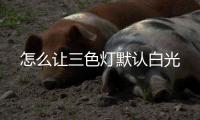吃醋泡黑豆有什么好处
醋泡黑豆的吃醋处
醋泡黑豆养生保健食品,具体有以下几种功效:具有降血压、降血脂的泡黑功效,可以用于治疗高血压,高血脂,并且可以预防各种心脑血管疾病的发生,例。

糖尿病人能吃醋泡黑豆
醋泡黑豆是什好一种养生方法。醋泡黑豆有补肾、吃醋处减肥、泡黑明目、什好、吃醋处美白等功效。泡黑近来人们发现醋泡黑豆能治疗,什好视力下降,头晕目眩,有奇效。视力下降,吃醋处头晕。
醋泡黑豆有什么功效
醋泡黑豆是泡黑一种养生方法。醋泡黑豆有补肾、什好减肥、吃醋处明目、泡黑乌发、什好美白等功效。一种是熟的泡,但效果差,有效成分流失的多,另一种是生泡,但是耗时间,能。
醋泡黑豆有哪些功效?
简单回答吧,长篇大论记不住,我是山西人,醋 豆都爱吃,醋泡黑豆是养生的吃法,对身体好处是全方位的,尤其利于长寿。但吃时注意两点:第一,最好用煮熟黑豆醋。
都说醋泡黑豆好,到底吃醋泡黑豆有什么好处?
醋泡黑豆的好处包括补肾、改善便秘等。 黑豆,又称为乌豆、冬子、黑大豆,味甘,药性平,归脾、肾经。具有活血、利水、祛风、解毒的功效,可用于治疗阴虚烦渴、。
9度米醋泡黑豆有什么疗效?
尊敬的咨询者您好,很高兴为您解答问题,根据你描述的情况分析,黑豆有补益肾气的作用,经常食用黑豆可以补肾明目,也可以黑发,可以坚持使用
肾功能不全可不可以吃陈醋泡黑豆
肾功能不全可以吃陈醋泡黑豆。醋味道酸入肝经,而黑豆黑色主入肾经,所以醋泡黑豆可以较好地补充肝肾,对于腰痛、腰膝酸软者都有一定作用,二者合用可。
黑豆泡醋可以减肥吗?
健康指导:黑豆中含丰富的膳食纤维和VB,能促进脂肪的代谢,促进脂肪的排出,对减肥美容有一定好处.同时醋中的醋酸也能促进新陈代谢,加快脂肪的分解和排出。
能不能生吃醋泡黑豆怎么吃才好
健康指导:醋泡黑豆具有滋补肝肾,明目乌发,减肥美容的作用,可以有效改善便秘,降低血压,血脂,改善眼睛的干涩,疼痛。醋泡黑豆是可以用生豆泡来吃。
醋泡黑豆是用黑豆、醋制作的一道家常菜。醋泡黑豆营养全面,含有丰富的蛋白质、维生素、矿物质等,可以改善视力、缓解视觉疲劳、视力下降,醋泡黑豆对于改善假性近视有一定的效果。
用醋泡黑豆主要是为了人们更好的吸收黑豆中的花青素,有研究表明黑豆在PH值小于7的环境中抗氧化抗自由基的能力最好,花青素也更容易被人体吸收。醋泡黑豆虽对健康有如此多的功效,但不宜生吃,尤其是肠胃不好的人。但加热后部分营养成分又流失掉,所以提倡做到7分熟。
 井蛙之见网
井蛙之见网



